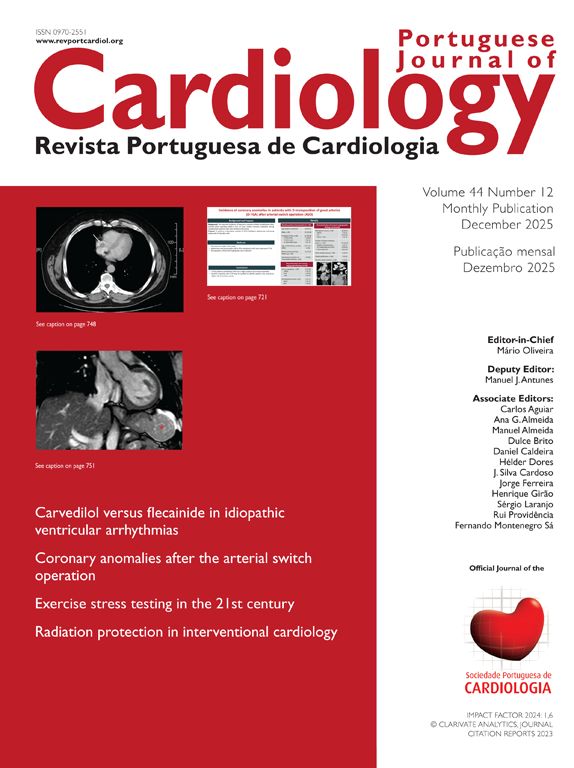Anemia has been shown to be an independent risk factor for cardiovascular events, in the community, in patients with heart failure, and in those undergoing percutaneous coronary intervention.
Over the last decade various authors have investigated the prognostic impact of hemoglobin levels in the context of acute coronary syndrome (ACS), both in the short-term (during hospitalization) and in the long-term (mainly up to three months, since few studies have assessed one-year outcomes).
Analyses of randomized trials report prevalence of anemia ranging between 15% and 43% in patients with myocardial infarction (MI).1,2 In theory, anemia can aggravate myocardial injury in MI patients, through both decreased oxygen supply to at-risk myocardium and increased oxygen demand resulting from increased cardiac output.
In an analysis of a database of more than 30000 patients admitted for MI, anemia was not associated with higher one-year mortality.3 However, a study of elderly patients with MI found a significant relation between hematocrit on admission and 30-day mortality, lower hemoglobin values being associated with progressively shorter survival.2
Sabatine et al.,4 in an analysis of patients from 16 TIMI trials, reported a J-shaped relationship with clinical events at 30 days: in patients with ST-elevation MI, mortality was higher in those with hemoglobin levels below 14g/dl or above 17g/dl, while in those with non-ST elevation ACS, death, infarction and ischemia increased for hemoglobin levels below 11g/dl or above 16g/dl.
The study by Ferreira et al.5 published in the Journal is the first of its type to assess a Portuguese population with ACS, and considering its single-center nature includes a significant number of patients. It aims to assess the prognostic impact, in-hospital and at one year, of hemoglobin levels at admission for ACS. The study population differs somewhat from that of other works, the patients being older and a higher percentage having anemia, possibly because the study was based in a tertiary hospital to which more severe cases are referred, as pointed out by the authors.
The study found that although anemic patients had higher in-hospital mortality, on multivariate logistic regression analysis the only independent predictor of in-hospital mortality was Killip class>1 at admission. However, hemoglobin<10.8g/dl was one of the strongest independent predictors of one-year mortality, in agreement with other published studies.
As proposed by other authors, Ferreira et al. suggest including hemoglobin level in risk stratification scores of patients admitted for ACS, given that it is an easy parameter to measure and is systematically assessed at admission.
However, the pathophysiological mechanisms behind the association between anemia and higher long-term mortality have not been fully clarified.
One possible adaptive response to anemia is left ventricular dilatation, resulting in increased wall stress, which in turn causes myocyte necrosis and fibrosis. This mechanism would be particularly harmful in the postinfarction period.6
In an attempt to understand these mechanisms, Rousseau et al.7 assessed 746 patients with non-ST elevation ACS from the Integrilin and Enoxaparin Randomized Assessment of Acute Coronary Syndrome Treatment (INTERACT) trial who underwent continuous electrocardiographic monitoring. An association was found between low hemoglobin levels and recurrent ischemia, advanced age, comorbidities and higher GRACE score. In multivariate analysis adjusted for these other factors, low hemoglobin maintained an independent association with recurrent ischemia. Thus, at least as far as non-ST elevation ACS is concerned, recurrent ischemia may be the factor responsible for the worse prognosis of anemic patients.
With regard to treatment of anemia, particularly blood transfusions, there is little consensus. Although low hemoglobin levels are associated with higher mortality, correcting them has been shown more often to worsen rather than to improve prognosis. In a retrospective analysis, Rao et al.8 assessed 2401 patients who underwent red blood cell transfusion during hospitalization for ACS. These patients were older and had more comorbidities at admission, as well as higher 30-day mortality and infarction rates (unadjusted) than those who did not undergo transfusion. Even after adjustment for other variables, mortality remained higher in the group who were transfused.
The conclusion may be drawn that anemia detected at admission for ACS identifies patients with worse prognosis, both in-hospital and at one year; these patients are usually older and with more comorbidities, which in themselves are frequently associated with anemia. Nevertheless, aggressive treatment of anemia in this context has not been shown to have a positive impact on prognosis.
Conflicts of interestThe authors have no conflicts of interest to declare.
Please cite this article as: Moura B, Anemia e prognóstico das síndromes coronárias agudas. Rev Port Cardiol; 2012. doi:10.1016/j.repc.2011.12.003.





